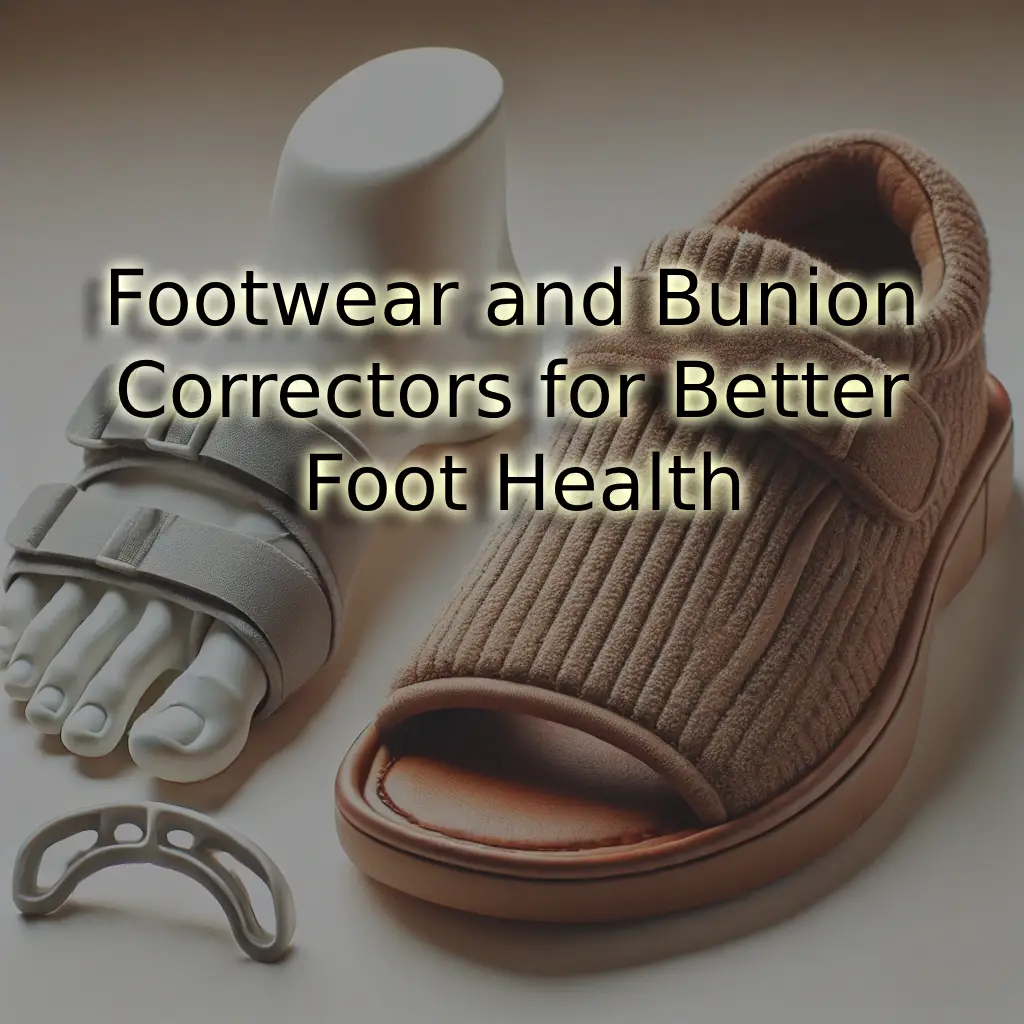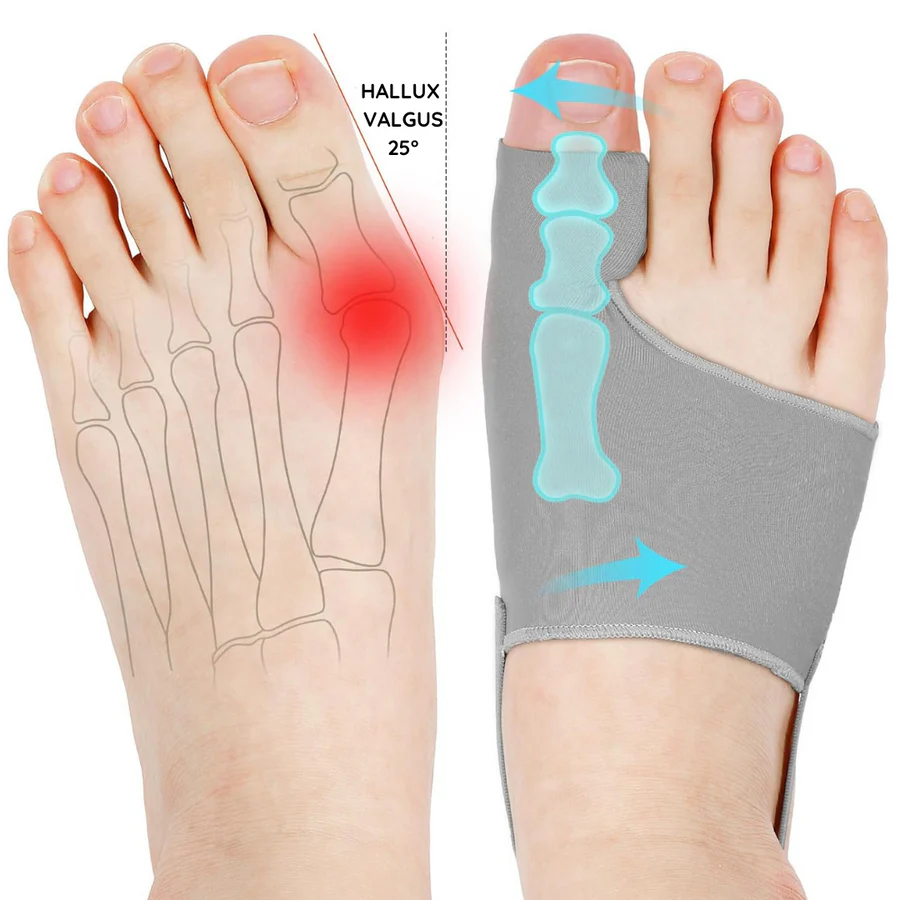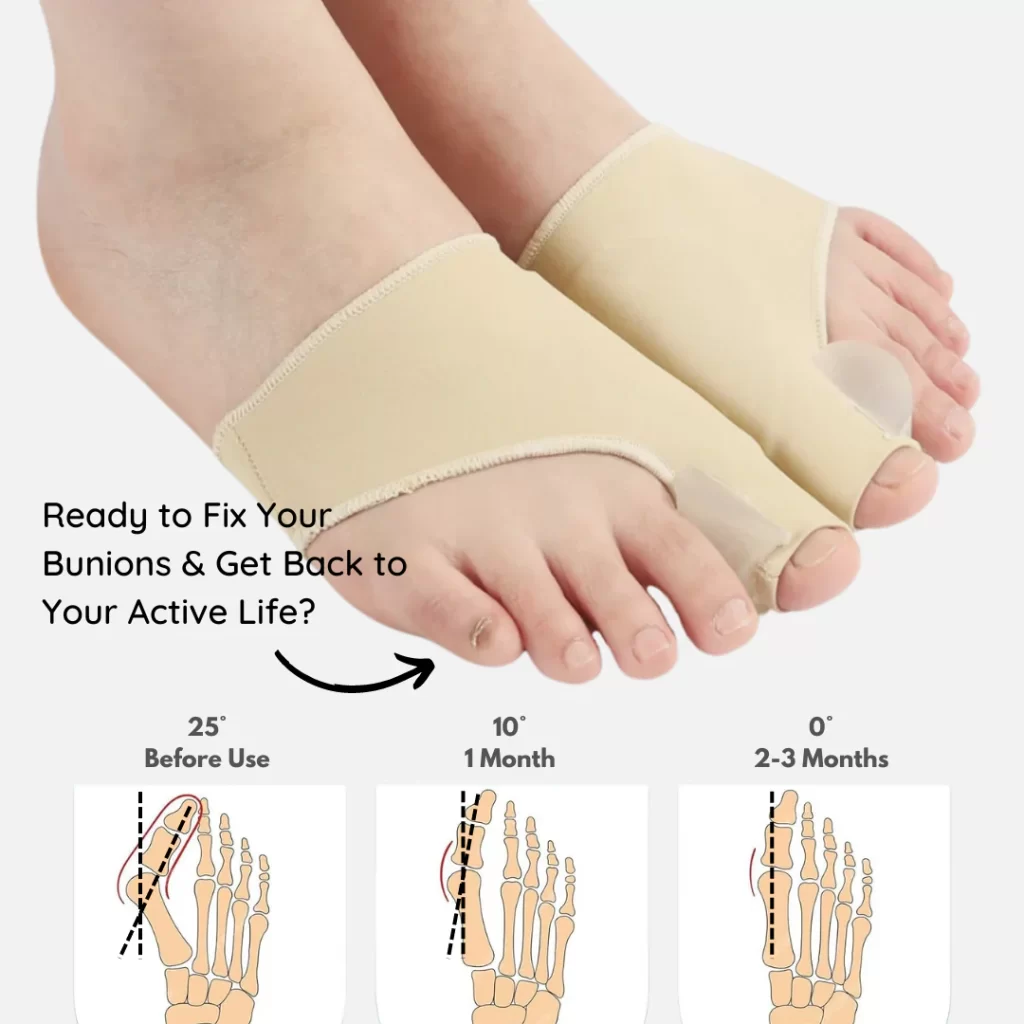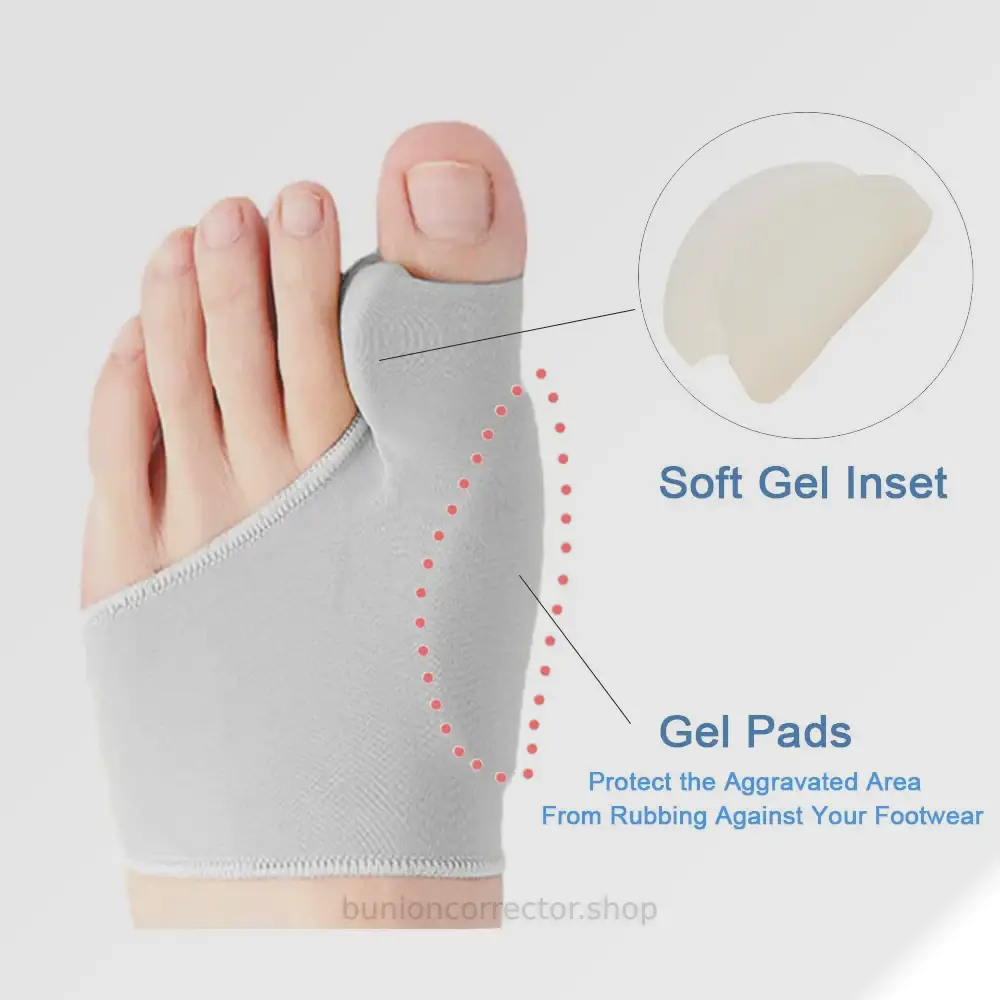Bunions are a common problem that many people face, leading to discomfort, pain, and difficulty in finding the right footwear. Luckily, modern solutions like bunion correctors and specially designed footwear can make a significant difference. In this blog, we will explore how the right combination of footwear and bunion correctors can provide relief, improve comfort, and even aid in correcting the condition over time.

What Are Bunions?
A bunion is a bony bump that forms on the joint at the base of your big toe. This condition happens when some of the bones in the front part of your foot move out of place, causing the big toe to pull toward the smaller toes. Over time, the bunion grows larger, making it painful to wear shoes and walk comfortably.
Bunions are more common in women, likely due to tighter or narrower footwear like high heels. Genetics also plays a role, as some people are more prone to developing bunions than others. However, regardless of the cause, a bunion can lead to significant discomfort if left untreated.
How Footwear Affects Bunions
The Wrong Shoes Make It Worse
One of the biggest contributors to bunions is wearing ill-fitting shoes. Shoes that are too tight, narrow, or have a pointed toe can squeeze your toes together, making the bunion worse. High heels can also aggravate the issue because they shift most of your body weight onto the toes, increasing pressure on the bunion joint.
Finding the Right Footwear
When you have a bunion, it’s crucial to choose footwear that accommodates the condition and does not make it worse. Look for shoes that have a wide toe box to give your toes room to move without squeezing them together. Additionally, shoes with soft materials and proper cushioning can reduce the pressure on the bunion joint, providing comfort and reducing pain.
Here are some key features to look for in bunion-friendly footwear:
- Wide Toe Box: This prevents squeezing the toes and allows natural movement.
- Low Heels: Opt for heels no higher than two inches to reduce pressure on the front of your feet.
- Arch Support: Good arch support can help distribute your weight evenly across the foot, reducing stress on the toes.
- Soft Material: Choose shoes made from soft leather or fabric that can stretch and mold to the shape of your foot.
The Role of Bunion Correctors
What Are Bunion Correctors?
Bunion correctors are devices designed to gently realign the toe joint and reduce pressure on the bunion. They come in different forms, including splints, sleeves, and toe separators, each with a specific function to help manage the condition.
While bunion correctors won’t make the bunion disappear entirely, they can provide relief from pain, improve alignment, and in some cases, slow the progression of the bunion. These devices are particularly useful when combined with the right footwear, as they work together to reduce pressure on the affected area.

How Do Bunion Correctors Work?
Bunion correctors help to straighten the big toe, reducing the pressure that causes pain and inflammation. By separating the toes and adjusting their position, these devices can relieve discomfort and improve mobility.
There are different types of bunion correctors, such as:
- Bunion Splints: These are worn at night and gently push the big toe back into its proper position while you sleep.
- Toe Separators: These are placed between your toes during the day to keep them properly aligned.
- Bunion Sleeves: These slip over your foot and provide cushioning and support, reducing friction between the bunion and your shoe.
Benefits of Using Bunion Correctors
- Pain Relief: Bunion correctors reduce pressure and friction, helping to relieve pain during walking or standing.
- Improved Toe Alignment: By keeping the big toe in the correct position, they help prevent the bunion from worsening.
- Increased Comfort: Bunion correctors can make it easier to wear shoes without discomfort, allowing you to go about your day more comfortably.
Why Footwear and Bunion Correctors Make a Great Team
When you combine the right footwear with a bunion corrector, you can significantly improve your comfort and manage the symptoms of bunions more effectively. The footwear provides external support, while the bunion corrector works to realign and cushion the toes. This combination can reduce pain, prevent further progression of the bunion, and improve your overall foot health.

How to Use Footwear and Bunion Correctors Together
- Wear Comfortable, Bunion-Friendly Shoes: Start by choosing shoes that fit well and have all the key features, such as a wide toe box, good arch support, and soft materials.
- Use Bunion Correctors Consistently: Bunion correctors should be used consistently to achieve the best results. Some can be worn during the day, while others, like bunion splints, are designed for nighttime use.
- Stay Active: It’s important to keep moving, as exercise can improve circulation and reduce stiffness in the feet. However, always wear supportive shoes and consider using a bunion corrector during physical activity to protect the joint.
- Stretch and Strengthen Your Feet: Simple foot exercises, like stretching the toes and rolling a ball under your foot, can help improve flexibility and strength. This can aid in bunion management and reduce pain over time.
Preventing Bunions: A Long-Term Approach
If you’re dealing with bunions or want to prevent them from developing, paying attention to your footwear and using bunion correctors can be a game changer. Prevention is always easier than treatment, so taking care of your feet before a bunion forms is key. Always opt for shoes that offer comfort and support, and avoid wearing tight, pointed shoes for extended periods.
Key Tips for Prevention:
- Choose the Right Shoes Early: Wearing proper footwear from the start can prevent bunions from developing.
- Avoid High Heels: Reserve high heels for special occasions, and avoid wearing them daily.
- Monitor Your Feet: If you notice a bunion starting to form, address it early with bunion correctors and appropriate footwear to prevent it from getting worse.
Conclusion
A winning combination of proper footwear and bunion correctors can make all the difference in managing bunions and improving foot health. By choosing shoes that provide support and using bunion correctors consistently, you can reduce pain, prevent further damage, and enjoy more comfort in your daily life.

At Bunion Corrector Shop, we offer a range of high-quality bunion correctors and comfortable, bunion-friendly footwear designed to help you live pain-free. Don’t let bunions hold you back – take control of your foot health today with the right solutions!